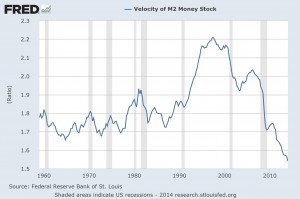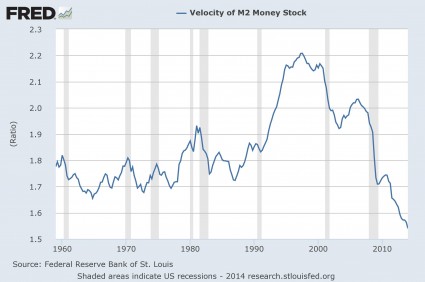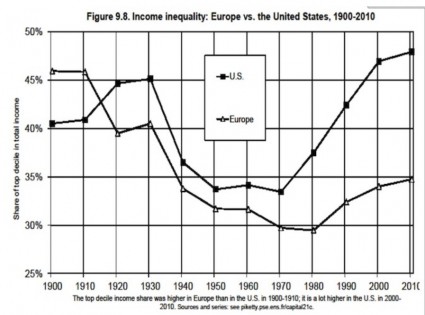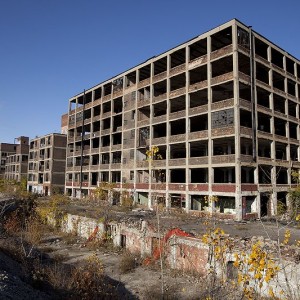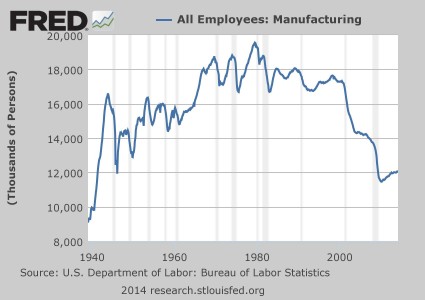 The marriage rate in the United States has fallen to the lowest level ever recorded. So why is this happening? Well, the truth is that there are a lot of reasons why so many young people are choosing not to get married today. One big reason is money. Young adults in the U.S. are really struggling to find good jobs, and many are hesitant to take a big step like marriage without achieving a certain level of financial security first. And as you will see below, many young adults (especially women) do not even want to date someone that is not employed. In this harsh economic environment, money makes a big difference in the world of romance. Another big reason for the decline of marriage in America is a seismic shift in cultural attitudes. Americans (especially young people) do not place the same kind of importance on marriage and having children that they once did. Instead, more Americans are choosing to “move in together” than ever before. But if the percentage of Americans that choose to get married continues to decline, what is that going to mean for our future, and what is our country going to look like moving forward?
The marriage rate in the United States has fallen to the lowest level ever recorded. So why is this happening? Well, the truth is that there are a lot of reasons why so many young people are choosing not to get married today. One big reason is money. Young adults in the U.S. are really struggling to find good jobs, and many are hesitant to take a big step like marriage without achieving a certain level of financial security first. And as you will see below, many young adults (especially women) do not even want to date someone that is not employed. In this harsh economic environment, money makes a big difference in the world of romance. Another big reason for the decline of marriage in America is a seismic shift in cultural attitudes. Americans (especially young people) do not place the same kind of importance on marriage and having children that they once did. Instead, more Americans are choosing to “move in together” than ever before. But if the percentage of Americans that choose to get married continues to decline, what is that going to mean for our future, and what is our country going to look like moving forward?
According to a startling new study conducted at Bowling Green University, the marriage rate in America has fallen precipitously over the past 100 years.
In 1920, there were 92.3 marriages for every 1,000 unmarried women. In 2012, there were only 31.1 marriages for every 1,000 unmarried women.
That is not just a new all-time low, that is a colossal demographic earthquake.
That same study found that the marriage rate has fallen by an astounding 60 percent since 1970 alone.
As a result, U.S. households look far different today than they once did.
Back in 1950, 78 percent of all households in the U.S. contained a married couple. Today, that number has declined to 48 percent.
That is a very troubling sign if you consider the family to be one of the fundamental building blocks of society.
When young people are asked why they are delaying marriage today, one of the things that always seems to get brought up is money. There is a feeling (especially among men) that you should achieve a certain level of financial security before making the big plunge.
And it is a fact that the more money you have, the more likely you are to be married. Just check out the following stats about income and marriage from a recent Business Insider article…
83% of 30- to 50-year-old men in the top 10% of annual earnings are married today, whereas only 64% of median earners and half of those in the bottom 25th percentile are hitched.
Now, compare that to men in 1970, whose marriage rates were 95% (top earners), 91% (median earners), and 60% (bottom 25th percentile of earners), respectively.
A lot of people like to think that “love is the only thing that matters” when it comes to marriage, but the cold, hard numbers tell a different story. In fact, one very shocking survey discovered that 75 percent of all American women would have a problem even dating an unemployed man…
Of the 925 single women surveyed, 75 percent said they’d have a problem with dating someone without a job. Only 4 percent of respondents asked whether they would go out with an unemployed man answered “of course.”
“Not having a job will definitely make it harder for men to date someone they don’t already know,” Irene LaCota, a spokesperson for It’s Just Lunch, said in a press release. “This is the rare area, compared to other topics we’ve done surveys on, where women’s old-fashioned beliefs about sex roles seem to apply.”
Unfortunately for American men, there simply are not enough good jobs to go around. In fact, the number of working age Americans without a job has increased by 27 million since the year 2000, and businesses in the U.S. are being destroyed faster than they are being created.
Due to a lack of economic opportunities, a rising percentage of our young people have been giving up on the “real world” and have been moving back in with Mom and Dad. For much more on this, please see my previous article entitled “29 Percent Of All U.S. Adults Under The Age Of 35 Are Living With Their Parents“. And when you break down the numbers, you find that young men are almost twice as likely to move back in with their parents as young women are.
But economic factors alone certainly do not account for the tremendous decline in the marriage rate that we have witnessed in this country. Shifting cultural attitudes also play a huge role.
A whole host of opinion polls and surveys show that Americans simply do not value marriage and having children as much as they once did. For example, the Pew Research Center has found that the younger you are, the more likely you are to believe that “marriage is becoming obsolete” and that “children don’t need a mother and a father to grow up happily”.
In fact, an astounding 44 percent of all Americans in the 18 to 29-year-old age bracket now believe that “marriage is becoming obsolete”.
And why should they get married? Our movies and television shows constantly tell them that they can have the benefits of being married without ever having to make a lifelong commitment.
This sounds particularly good to men, since they can run around and have sex with lots of different women without ever having to “settle down”.
But there are most definitely consequences for this behavior. The “sexual revolution” has left behind countless broken hearts, shattered dreams, unintended pregnancies and devastated families.
In addition, the U.S. has become a world leader when it comes to sexually-transmitted disease.
It is hard to believe this number, but according to the Centers for Disease Control and Prevention approximately one-third of the entire population of the United States (110 million people) currently has a sexually transmitted disease.
So nobody should claim that the “sexual revolution” has not had any consequences.
But most Americans don’t actually run around and sleep with lots of different people at the same time. Instead, most Americans seem to have adopted a form of “serial monogamy“.
In America today, most people only sleep with one person at a time, and “living together” is being called “the new marriage”.
According to the CDC, 74 percent of all 30-year-old women in the U.S. say that they have cohabitated with a romantic partner without being married to them, and it has been estimated that 65 percent of all couples that get married in the United States live together first.
Many believe that by “trying out” the other person first that it will give them a much better chance of making marriage work if they eventually do choose to go down that path. Unfortunately, that does not seem to work out very well in practice. In fact, the divorce rate for couples that live together first is significantly higher than for those that do not.
And when it comes to divorce, America is the king.
For years, the U.S. has had the highest divorce rate in the developed world.
But it wasn’t always this way. Back in 1920, less than one percent of all women in the United States were currently divorced or separated. Today, approximately 15 percent of all women in the United States are currently divorced or separated.
So why are so many people getting divorced?
Of course there are a lot of factors involved (including money), but a big one is cheating. According to one survey, 41 percent of all spouses admit to infidelity. Many Americans simply find it very difficult to stay committed to one person for an extended period of time.
As a result of what I have discussed so far, it is easy to see why people in our society are so lonely and so isolated. Less people are getting married, more divorces are happening and couples are having fewer children. This means that our households are smaller and we have far fewer family connections than we once did.
100 years ago, 4.52 people were living in the average U.S. household, but now the average U.S. household only consists of 2.59 people.
That is an astounding figure.
And the United States has the highest percentage of one person households on the entire planet.
But we weren’t meant to live alone. We were meant to love and to be loved.
Often, those that are being hurt the most by our choices as a society are the children. They need strong, stable homes to grow up in, and we are not providing that for millions upon millions of them.
When you look at just women under the age of 30 in the United States, more than half of all babies are being born out of wedlock.
That would have been unimaginable 100 years ago.
And of course when there is no marriage involved, a lot of times the guy does not stick around. At this point, approximately one out of every three children in the United States lives in a home without a father, and in many impoverished areas of the country the rate is well over 50 percent.
In addition, women are waiting much longer to have children than they once did.
In 1970, the average woman had her first child when she was 21.4 years old. Now the average woman has her first child when she is 25.6 years old.
The biggest reason for this, once again, is money…
In the United States, three-quarters of people surveyed by Gallup last year said the main reason couples weren’t having more children was a lack of money or fear of the economy.
The trend emerges as a key gauge of future economic health — the growth in the pool of potential workers, ages 20-64 — is signaling trouble ahead. This labor pool had expanded for decades, thanks to the vast generation of baby boomers. Now the boomers are retiring, and there are barely enough new workers to replace them, let alone add to their numbers.
We are waiting longer to have children and having fewer of them, but those children are needed for the economic future of this country.
Fifteen years from now, one out of every five Americans will be over the age of 65. All of those elderly Americans are going to want the rest of us to keep the financial promises that were made to them. But that is going to turn out to be quite impossible. We simply do not have enough people.
In the end, the economics of marriage does not just affect those that are thinking of getting married or those that are already married.
The truth is that the economics of marriage affects all of us.
So what do you think is in store for the future of the institution of marriage in this country?
Please feel free to share what you believe by posting a comment below…
 The numbers that you are about to see are likely to shock you. They prove that the global financial Ponzi scheme is far more extensive than most people would ever dare to imagine. As you will see below, the total amount of debt in the world is now more than three times greater than global GDP. In other words, you could take every single good and service produced on the entire planet this year, next year and the year after that and it still would not be enough to pay off all the debt. But even that number pales in comparison to the exposure that big global banks have to derivatives contracts. It is hard to put into words how reckless they have been. At the low end of the estimates, the total exposure that global banks have to derivatives contracts is 710 trillion dollars. That is an amount of money that is almost unimaginable. And the reality of the matter is that there is really not all that much actual “money” in circulation today. In fact, as you will read about below, there is only a little bit more than a trillion dollars of U.S. currency that you can actually hold in your hands in existence. If we all went out and tried to close our bank accounts and investment portfolios all at once, that would create a major league crisis. The truth is that our financial system is little more than a giant pyramid scheme that is based on debt and paper promises. It is literally a miracle that it has survived for so long without collapsing already.
The numbers that you are about to see are likely to shock you. They prove that the global financial Ponzi scheme is far more extensive than most people would ever dare to imagine. As you will see below, the total amount of debt in the world is now more than three times greater than global GDP. In other words, you could take every single good and service produced on the entire planet this year, next year and the year after that and it still would not be enough to pay off all the debt. But even that number pales in comparison to the exposure that big global banks have to derivatives contracts. It is hard to put into words how reckless they have been. At the low end of the estimates, the total exposure that global banks have to derivatives contracts is 710 trillion dollars. That is an amount of money that is almost unimaginable. And the reality of the matter is that there is really not all that much actual “money” in circulation today. In fact, as you will read about below, there is only a little bit more than a trillion dollars of U.S. currency that you can actually hold in your hands in existence. If we all went out and tried to close our bank accounts and investment portfolios all at once, that would create a major league crisis. The truth is that our financial system is little more than a giant pyramid scheme that is based on debt and paper promises. It is literally a miracle that it has survived for so long without collapsing already.

